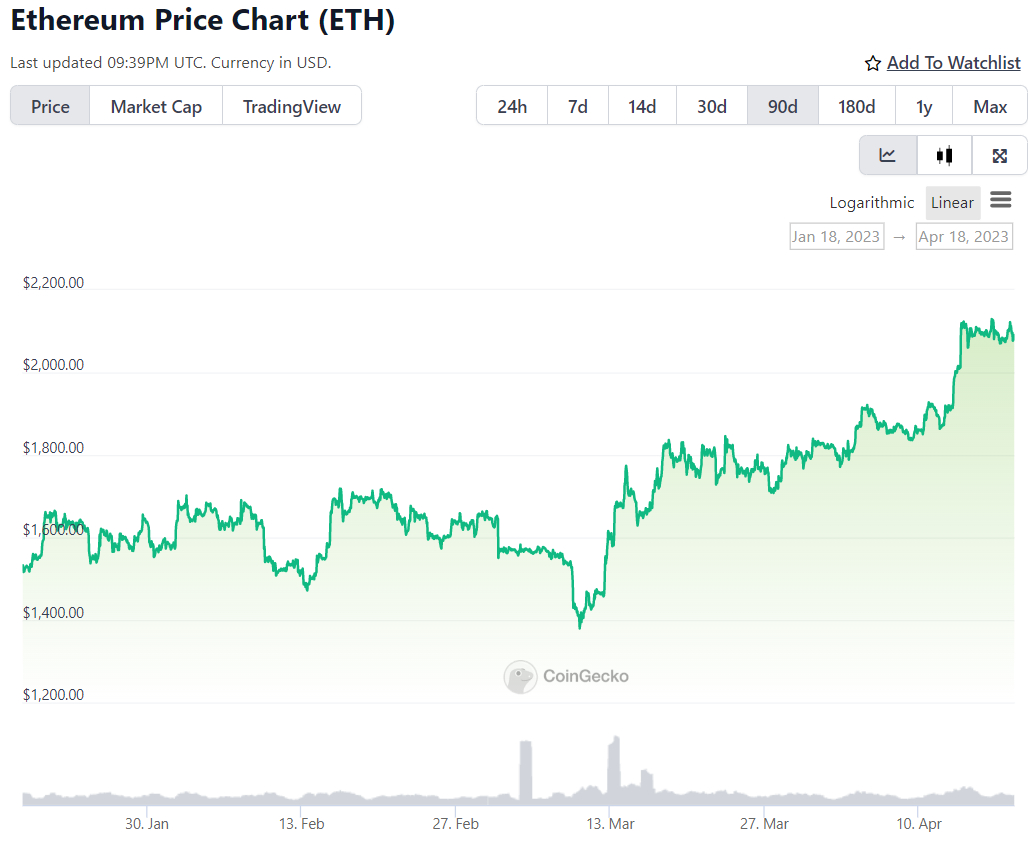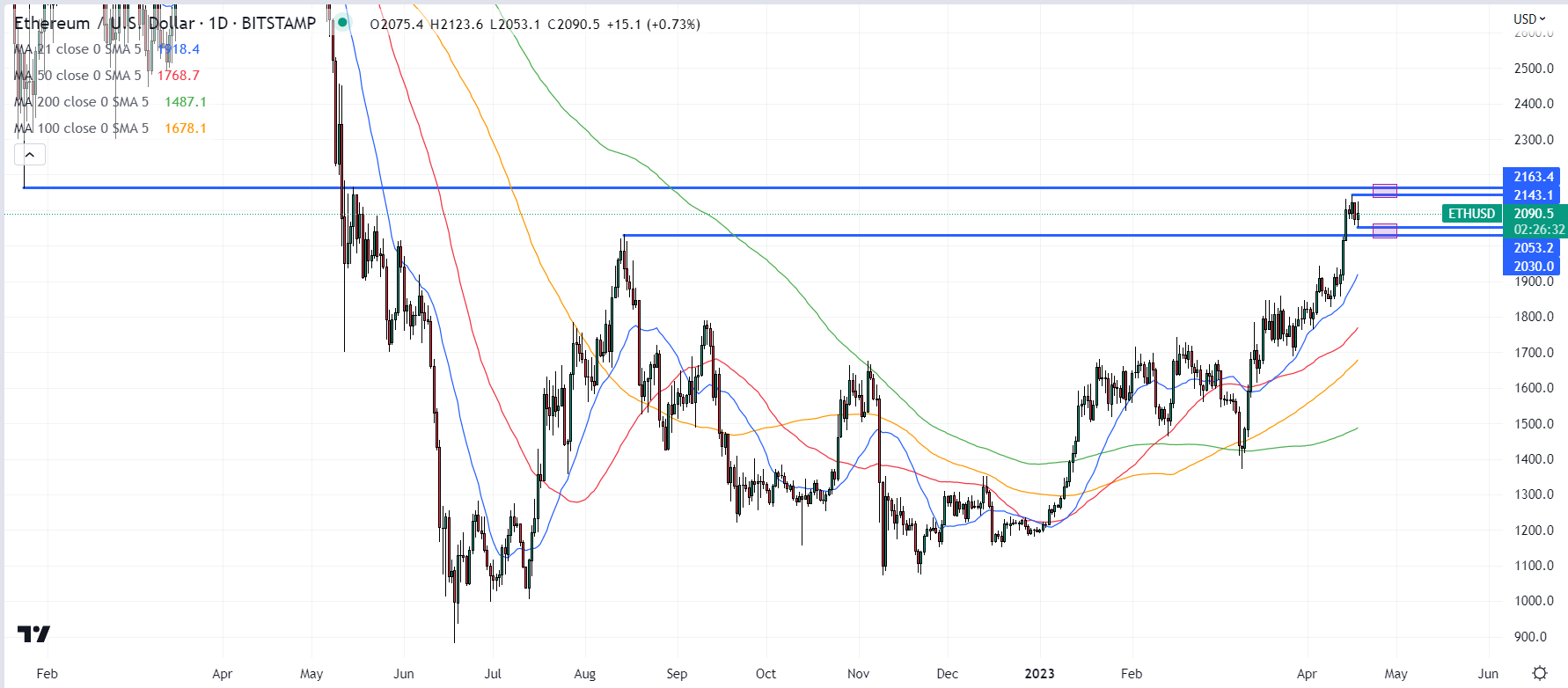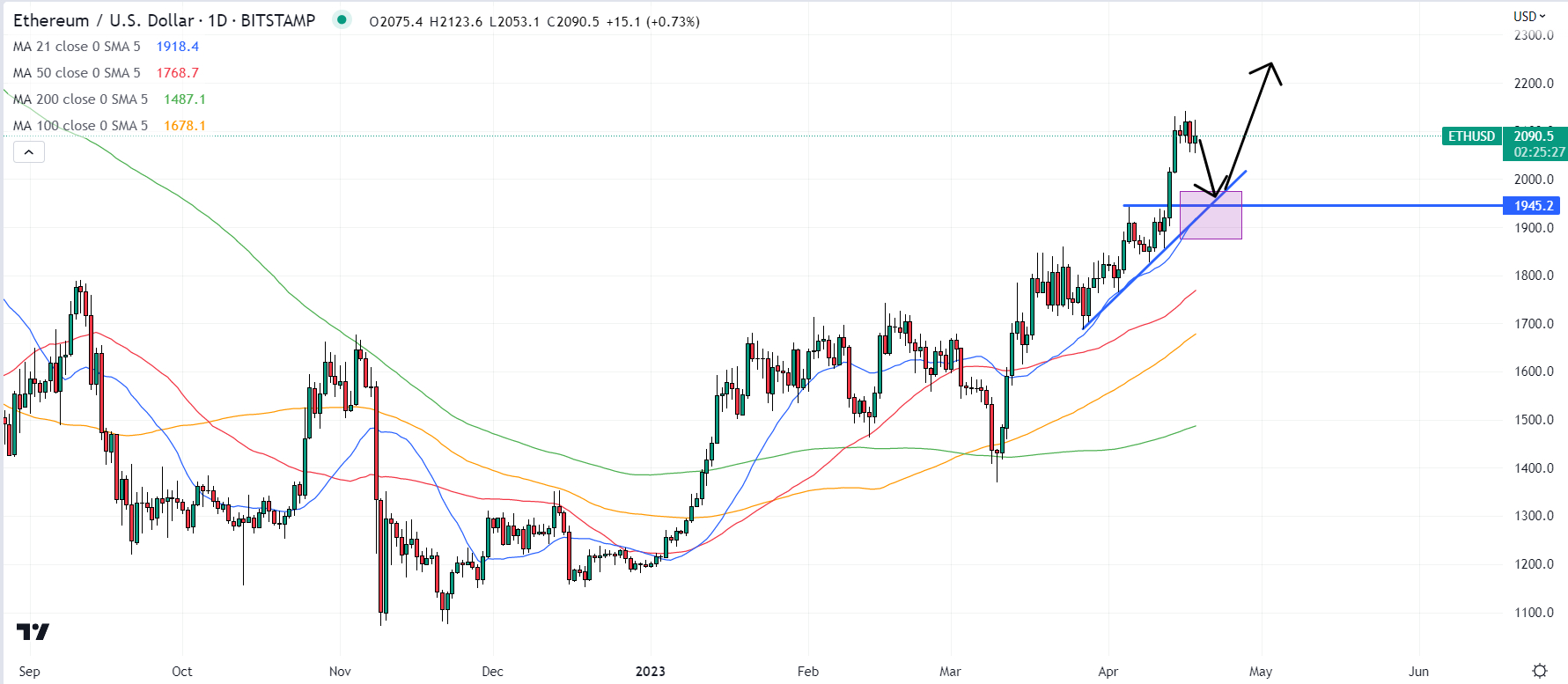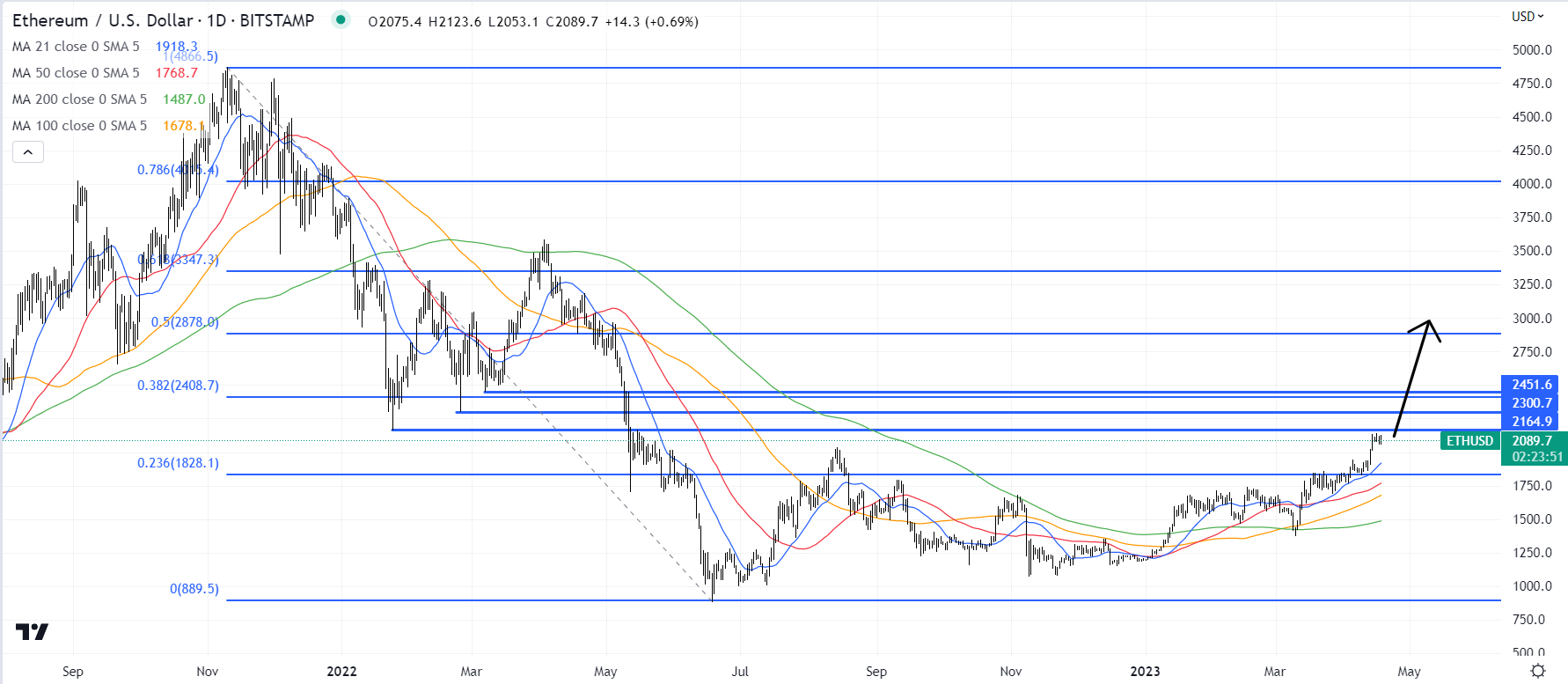Key Ethereum Levels to Watch as ETH Price Pivots $2,100

Midway through last week and following the successful implementation of the Shanghai and Capella upgrades to the Ethereum blockchain, the price of Ether (ETH) broke convincingly above the $2,000 level for the first time since May 2022.

Ether, the crypto token that powers the smart-contract-enabled Ethereum blockchain, has since been consolidating either side of the $2,100 level, with gains on the year currently around the 73% mark.
Naturally, after Ether’s latest push higher above the key psychological $2,000 mark and long-term resistance around $2,030, traders are asking where next for the world’s second most valuable cryptocurrency by market capitalization.
Continued consolidation over the next few days and weeks is a distinct likelihood given a lack of major macro and Ethereum-specific fundamental catalysts to drive the price action.
With the “Shapella” upgrade now out of the way, attention now turns to 1) watching on-chain ETH token staking trends and 2) on when Ethereum developers will implement the next round of major upgrades to the blockchain.
For reference, the latest series of Ethereum upgrades unlocked staked ETH token withdrawals for the first time since staking was enabled on the Beacon chain back in December 2020.
Meanwhile, the next major macro events that could really shift narratives about the outlook for US economic growth and Fed tightening policy come next Wednesday (Q1 GDP) and Friday (March Core PCE Inflation).
A steady crawl higher in the ETH price is certainly possible, but the risk of further profit-taking activity remains high, with ETH’s 14-Day Relative Strength Index (RSI) having recently crossed into overbought territory.
Key ETH Levels to Watch
To the upside, traders will be monitoring how the ETH price responds to resistance in the $2,140-60 area in the form of the earlier yearly highs and last January’s lows.
Meanwhile, to the downside, the closest major area of support is the August 2022 high in the $2,040 area.

It would be unsurprising to see the ETH marooned within this range over the course of the next few days, assuming no major unexpected catalysts arrive to shake up the price action.
But should volatility pick up once again and profit-takers and shorters overpower the bulls, the next major support area to monitor to the downside is an uptrend linking ETH lows since late March, the 21-Day Moving Average (currently at $1,918) and previous yearly highs in the $1,940 area.

A retest of this collection of support levels would be a key test of the market’s short-term bullish momentum.
Should dip-buyers come back in force and prices bounce in the $1,900s, many technicians might interpret this as a powerful vote of confidence in the market’s near-term outlook.
Many would likely then be targeting a test of the $2,300 area.
Indeed, beyond the January low at $2,160, $2,300 is the next key area of resistance (the February 2022 lows. Beyond that, the next area to watch is the March 2022 lows in the $2,440 area.
If the ETH bulls can push the price above here, there aren’t any major resistance levels until beyond the psychologically important $3,000 mark, aside from the 50% Fibonacci retracement level back from the 2022 lows to the 2021 record highs, which sits around $2,870.

While things will certainly be choppy in the months ahead, major cryptocurrencies are likely to continue trading with an upside bias.
That’s because macro conditions will likely continue to shift favorably as traders up bets for a Fed rate cutting cycle to stave of a recession in the second half of this year and in 2024.
Meanwhile, Ether is likely to benefit from dual deflationary tailwinds in the form of 1) more ETH tokens being moved into the staking contract and 2) ETH supply deflation thanks to the ongoing burning of transaction fees.
Optimism regarding continual upgrades to the network, the next round of which should materially improve ETH’s transaction throughput via the implementation of sharding, could add another major tailwind.




